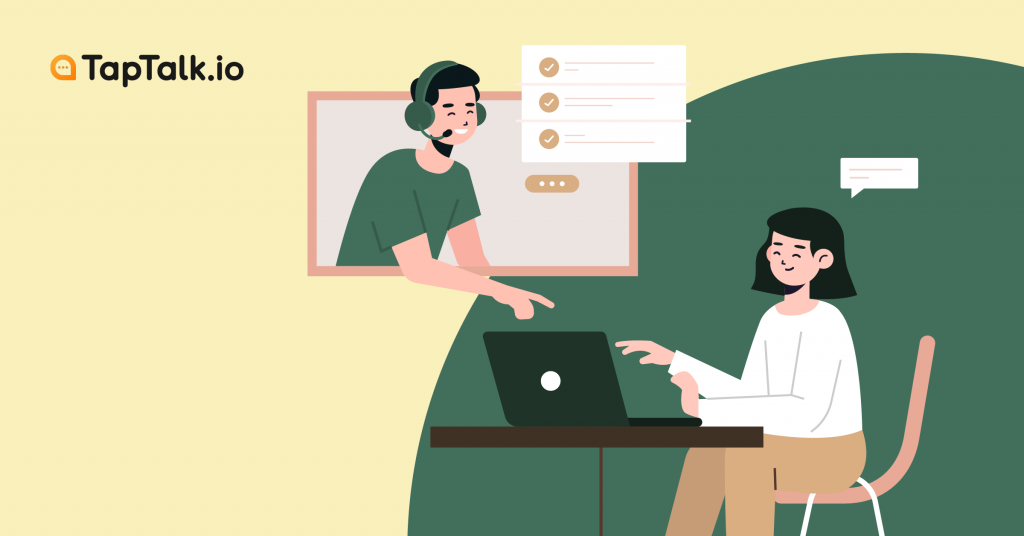
Every business that relies on websites as a customer engagement platform is always trying to find ways to increase visitors numbers on their website. There are two ways to achieve this𑁋sitting idly and just waiting and answering customer’s questions and complaints when they ask you or show your initiative before your customers reach you. While you ponder which ways are better, you should know that the second option, you can show your initiative before the customer asks for it. This explains how proactive live chat works.
You can definitely pick whatever approach you want, but reaching the customer first before any problems arise to show that you can deal with a potential problem as a result and will be more effective. The customer will get a detailed response and feels valued. So, how is proactive chat explained and how can it grow your business?
What is a proactive chat?
Proactive chat is the ability to target website visitors and then, using curated visual cues and sound effects, deliberately invite those visitors to participate in live chat interactions. In other ways, proactive chat messages are automated messages that invite your site visitors to start a conversation. This feature helps the live chat agent to take the lead, show interest, and willingness to solve customer problems as quickly as possible.
Much like an actual store salesperson, customer support experts invite visitors to talk. Taking the first steps with proactive chat software is now easier than it was years ago. Want to see some proactive chat best practices to use in your business? It's the next stop here.
Proactive chat best practices
Proactive chat is the perfect chance to show customers how much you care. It's a lot more effective to reach out to a client first and show that you can give a solution before problems arise or before complaints come.
There are several tactics that allow you to interact with customers instead of frustrating them. Now let's find out the do's and don'ts of proactive live chat, and pay attention to what you should and shouldn't do to make proactive messages work amazingly:
1. Know your time
For starters, set the message trigger to 1 minute. In general, you don't want to charge visitors all at once, give them time to look around. But how do you know which time is the right one? So, you can check the average time spent on the page using Google Analytics or other similar tools, and determine when a customer is aware of the content but will leave. Next, send a proactive chat message offering assistance.
For example, you see a customer completing an order for one minute. Run a proactive message under 1 minute, saying "Hi! Do you need help with your order? I’ll be happy to answer any questions."
2. Make your proactive conversation personal
With this type of chat, there's no point hiding behind a mask. Show your clients who you are, introduce yourself, and have friendly conversations. Try to avoid common yes / no questions and make sure your conversation is meaningful. You can also configure your messages according to the country, city, or language of the customer's current browser using a dedicated chat engine for that.
3. Keep the conversation specific and relevant
Use two different methods when someone is browsing pricing pages or technical support pages. For example, starting a sales presentation if the customer is facing some technical problem is not the best scenario. The customer is waiting for a solution, not another agreement. Since your goal is to provide service, prioritize customer needs. Choose their preference, and send a proactive message with several options in it.
For example, instead of "Do you need help?" Say "Hey! Need help choosing great leather handbags?"
4. Know your limits
Allow your customers to close chat windows or ignore conversations when they want to. Make sure that your help is adequate and that you don't annoy clients. For example, the message "Hi, I have added 1 item to your cart. Continue to the Payments section.” This message can sound too pushy. Also, don't put flashy live chat windows on every page of the site. Select a few pages instead, make the most of it there.
5. Limit the number of Proactive Messages
There is a trigger that lets you monitor how many preemptive chat invitations you have actually sent. Set it up if you don't want to bombard customers with multiple messages per page. This rule is the "number of preemptive invitations sent" and "the time since the last proactive invitation".
OneTalk offers you some features that allow you to reach customers before problems arise. One of them is Start New Conversation feature that allows you to start a case so that your business can reach your customer first. You can use this feature just by entering your destination number. Practicing Proactive Chat can also be done by another feature by OneTalk, Broadcast Message. You can reach a lot of customers all at once by sending proactive messages. You don’t even need to worry about sending messages that are too long to read, because this feature allows you to preview your messages before you hit send. Reaching your customer through broadcast messages can enhance your performance as a proactive business.
We currently offer 14 days free trial (no credit card required). Let's reach your customers using OneTalk, contact us at sales@taptalk.io, or visit our website for more info!
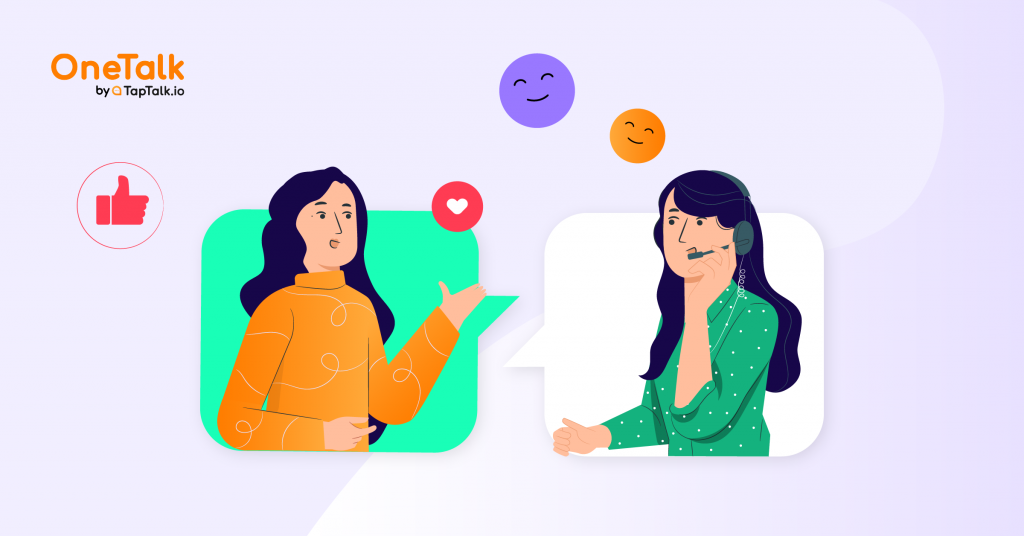
An extremely important part of growing a profitable company is managing customer retention. According to a Harvard Business School study, growing customer retention rates by only 5% will increase the earnings of a company by 25-95%. What is customer retention? Customer retention is a series of practices targeted at retaining consumers and converting them into committed customers for the long term.
Any business requires a new customer. But, the simplest and most predictable source of potential revenue comes from loyal clients who already know your business and have bought it from you. It costs less to keep customers than to obtain them, and both contribute to the bottom line of the business.
It's important to be aware of customer satisfaction because it allows you to realize how committed and happy your customers are, how powerful your customer support is, and whether any warning flags can scare future customers off.
So consider using these few support strategies to maximize your profitability by retaining the customer you currently have until you go all-in on approaches intended to bring new buyers into the sales pipeline.
Preventing a customer from leaving is the most simple way to guarantee customer retention. You will still sense the signs of the customer's imminent exit if you really pay attention.
You need to define the key variables in customer behavior, such as purchasing habits, product utilization, and customer service inquiry history, to catch these 'alert' signals. Then, before they churn, you would need to analyze these signs and take steps to deter your clients. So you need to pay attention to your customers.
Asking your customer is the perfect way to find out what they think of your business. A perfect starting point for knowing what needs to be fixed with the overall experience is to use consumer surveys to gather feedback and diagnose future frustration.
To get a deeper insight into what is working, and what is not, give your clients a fast online survey to complete. On any topic, you'll never satisfy every client, but surveys will help you find trends that you've overlooked. To encourage the consumer to convey their views more fully where possible, a successful survey should include a mixture of multiple-choice questions and free text response areas.
When you ask them for their opinion, customers love it. It means that you care and are willing to go the extra mile to hold them.
The secret to online customer retention is continuous contact with clients through their favorite platform. There are 3.9 billion email users worldwide today, and even though social media is very popular, email is still the primary contact medium for customers. Use email to follow up with customers who needed help. Ask for input from customers, ask them to leave ratings online, and gather information.
At first sight, this may sound a little simple, but what a business finds to be outstanding customer service does not necessarily fit what the customer feels is excellent customer service.
Personalizing your experiences with customers provides an opportunity for them to stick with you. They feel as if you care, and this provides a stronger bond with your business. Via enhanced user service, the use of personalization increases customer engagement rates.
You reward the customers who regularly order from you by establishing a consumer loyalty program. This offers them an opportunity to keep shopping. It also reveals to them that the business pays attention to its customers. You can use points or other forms of reward to your customers. It's often necessary to provide exclusive discounts and other benefits as well.
A program of customer loyalty will inspire your customers to buy from your company. This keeps the levels of customer satisfaction high.
All of these strategies can be helped by the presence of a CXM (Customer Experience Management). CXM software facilitates and enables customer retention by helping you monitor customer activity over time. It will warn you about their shopping habits, the use of goods, and when they avoid ordering from you. To learn what their issues are, you can even monitor customer service experiences. These primary consumer behavior variables can serve as alert signs that you can use to maximize customer retention.
There is a software that can help boost CXM. OneTalk by TapTalk.io, it uses an omnichannel networking network. Through OneTalk, you will have a lot of features to make the experience of your consumer delightful and extremely fun as a trusted omnichannel messaging network. The omnichannel function of OneTalk helps your agent to manage several client cases at one time. You should also keep an eye on the work of your agents and simultaneously push up your sales and marketing.
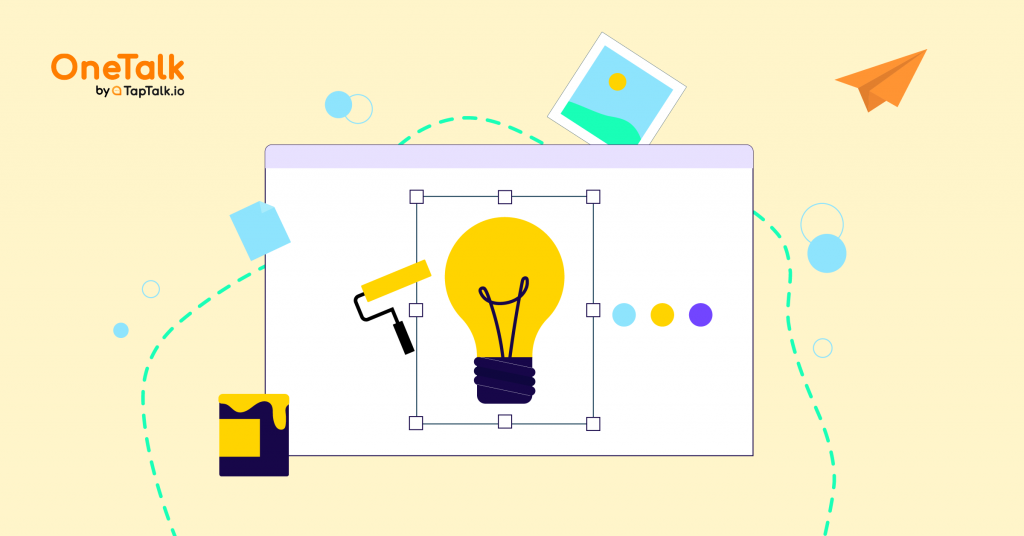
Dahulu, branding didefinisikan sebagai nama, slogan, tanda, simbol atau desain, atau kombinasi dari elemen-elemen tersebut, yang membedakan satu perusahaan, produk, atau layanan dari yang lain. Saat ini, branding menjadi lebih kompleks dan bahkan lebih penting.
Branding, secara konvensional, adalah praktik pemasaran di mana perusahaan membuat nama, simbol, atau desain yang mudah diidentifikasi sebagai milik perusahaan. Ini membantu dalam mengidentifikasi produk dan membedakannya dari produk dan layanan lain.
Branding penting karena tidak hanya memberikan kesan yang tak terlupakan pada konsumen, tetapi juga memungkinkan pelanggan Anda mengetahui apa yang diharapkan dari perusahaan Anda. Ini adalah cara untuk membedakan diri Anda dari pesaing dan mengklarifikasi apa yang Anda tawarkan yang membuat Anda menjadi pilihan yang lebih baik. Branding dibangun untuk menjadi representasi utama tentang “siapa” perusahaan Anda dan bagaimana perusahaan Anda ingin dilihat oleh pelanggan Anda.
Bagaimana Anda tahu jika brand Anda cukup kuat untuk memberi Anda nilai internal dan eksternal yang Anda butuhkan? Mulailah dengan pertanyaan-pertanyaan di bawah ini.
Selain pertanyaan-pertanyaan di atas, lanjutkan dengan mengetahui betapa pentingnya branding yang baik untuk menciptakan usaha yang sukses. Karena, branding memiliki kaitan erat terhadap kesan dan citra perusahaan, juga berkaitan dengan kesuksesan usaha Anda.
Mengapa branding itu kritikal bagi usaha yang sukses?
Branding memang sangat kritikal bagi sebuah perusahaan, karena dampak pada keseluruhan perusahaan. Branding dapat mengubah cara orang melihat perusahaan Anda, dan dapat mendorong usaha baru untuk meningkatkan branding mereka.
Di bawah ini adalah alasan mengapa branding itu sangat penting untuk usaha yang sukses:
1. Branding dapat meningkatkan niat customer untuk membeli produk
Hal pertama yang membuat branding menjadi kritikal dalam usaha adalah karena Branding dapat membangun kepercayaan customer terhadap produk lewat storytelling. Dengan cerita ini brand bisa memposisikan produknya terhubung kepada target pelanggan. Selain memposisikan produk dengan tujuan yang ingin dicapai pelanggan, brand yang baik juga akan meningkatkan kepercayaan pelanggan terhadap produk, yang pada akhirnya juga akan meningkatkan niat seseorang membeli produk Anda.
2. Meningkatkan penjualan produk melalui branding
Branding sangat berpengaruh terhadap penjualan melalui faktor desain. Desain yang menarik membuat persepsi yang berbeda atas sebuah produk yang nantinya berujung pada pembelian. Ketika seorang pelanggan atau calon pelanggan pertama kali membuat citra dari branding Anda, maka saat-saat penting terjadi ketika mereka memutuskan apakah brand Anda cukup menarik atau tidak untuk digunakan.
3. Branding dapat menambah visibilitas perusahaan
Persaingan dengan kompetitor yang selalu ada membuat perusahaan menambah visibilitas yang menarik agar menangkap perhatian pelanggan. Pelanggan akan mencari lebih dalam mengenai perusahaan Anda atau brand Anda, karena produk atau brand Anda meninggalkan kesan yang lebih diingat, dibanding perusahaan kompetitor lain. Visibilitas ini nantinya akan berkaitan erat dengan penjualan atau sales perusahaan.
4. Memperkuat perusahaan dengan pesan branding
Dengan branding yang menarik, customer akan mudah mendapatkan pesan tentang perusahaan anda. Dengan ini perusahaan memiliki konsistensi terhadap produk atau jasa yang diberikan.
5. Branding yang baik akan menambah pelanggan baru
Selain berkaitan erat dengan penjualan, branding ini juga akan mempengaruhi faktor referal. Promosi dan marketing dari mulut ke mulut atau referal ini akan membantu bisnis. Perusahaan yang paling sukses, kecil dan besar, memiliki satu kesamaan. Mereka telah dengan kuat menempatkan diri mereka sebagai pelopor dalam industri mereka dengan membangun branding yang kuat.
Ketika brand meninggalkan kesan baik dan kesan produk juga berbanding lurus, maka pelanggan baru akan bermunculan dengan rekomendasi pelanggan yang sudah puas akan pelayanan dan produk yang mereka nikmati. Hal ini akan kembali menambah sales atau penjualan perusahaan.
Bagaimana menciptakan branding yang meningkatkan kesuksesan usaha?
Untuk mencapai branding yang dapat meningkatkan kesuksesan perusahaan atau bisnis Anda, Anda dapat menggunakan omnichannel messaging platform yang terpercaya. Brand omnichannel yang terpercaya, OneTalk adalah brand omnichannel yang dapat membantu anda mengembangkan branding perusahaan.
OneTalk, memungkinkan Anda meningkatkan sales, marketing, dan support perusahaan dengan berbagai fitur menariknya. Dengan All-in-one inbox, OneTalk memungkinkan Anda mengintegrasikan beberapa platform perpesanan sekaligus, dan akan meningkatkan customer support yang dibutuhkan pelanggan. Sehingga, pelayanan ini akan menciptakan image brand Anda yang mengutamakan kepentingan pelanggan.
Dengan meninggalkan kesan yang berorientasi pada pelanggan, mereka akan mengingat perusahan Anda sebagai brand yang menyenangkan dan memprioritaskan kenyamanan pelanggan.
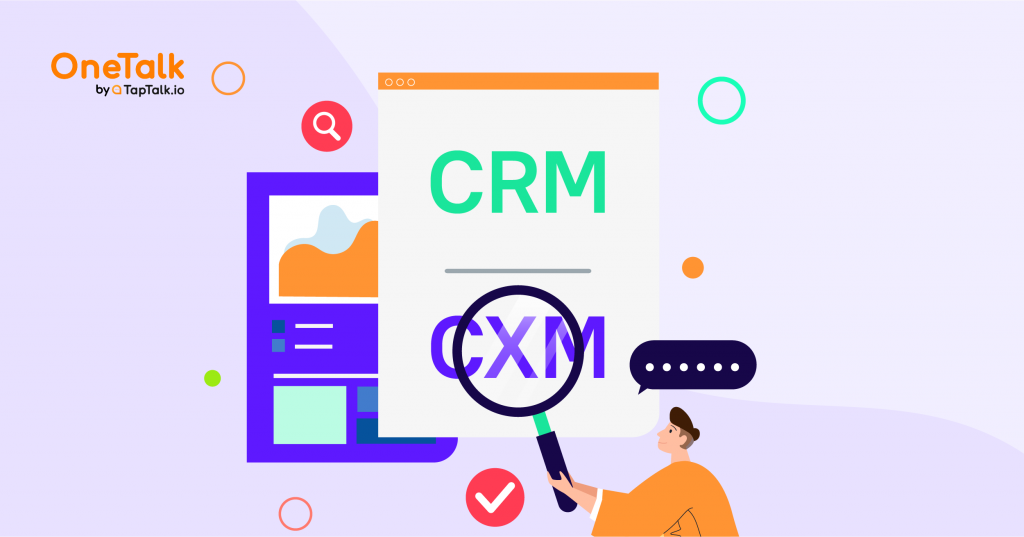
There is a clear difference between Customer Experience Management (CXM) and Customer Relationship Management (CRM). To find out, we have to look at the CXM definition and CRM definition.
Customer Experience Management (CXM) is the practice of designing and responding to customer interactions to meet or exceed customer expectations and increase customer satisfaction, loyalty and support.
Meanwhile, Customer Relationship Management (CRM) is a business strategy that optimizes profitability and revenue while promoting customer satisfaction and loyalty. CRM technology enables strategies to identify and virtually identify customer relationships and manage them. CRM software provides capabilities to companies in four segments: sales, marketing, customer service, and digital commerce.
Differences
Customer relationship management (CRM) software tracks sales leads and customer interactions. CRM facilitates the development of relationships for organizations. CRM systems have many advantages, but not all businesses need them.
Customer Experience Management (CEM or CXM) is a broader information gathering process for tracking, monitoring, and managing all interactions between customers and organizations throughout the customer life cycle. Focus on unique perspective insights by digging deeper into the customer experience, listening to the customer, analyzing feedback, understanding the customer's perspective, and optimizing the customer experience.
CRM helps build relationships with your organization. CXM focuses on monitoring and improving the customer experience.
While CRM is more system-centered and captures customer data and processes, CXM takes a more qualitative approach to focusing on customers and making quantitative information more practical.
Value to organization
CRM solutions have been poorly reported over the past few years, but are successful enough as a customer logging system to capture, store, process, and share data for staff management, process efficiency, and business analysis purposes. But of course, this area offers little immediate benefit to customers.
CXM uses software to control the customers and staff who serve them, making it relevant to apply technology to support an overall customer-centered strategy and achieve a competitive advantage. We will shift our focus to providing personal and excellent customer service.
CXM solutions shift the focus from data management to implementing customer information at the right time and place, and can be used to provide a consistent customer experience that better pleases customers.
CXM is more qualitative than quantitative and has the basic features that make CRM information viable and a stronger objective for customer results. If a CRM system struggles to use customer data for practical use when it can be applied to help interact with customers, CXM completes the information journey for customer experience and measurable benefits.
In addition, the CXM solution needs to provide a great customer experience on the channels and devices that customers want to use, such as web, web chat, SMS, mobile, smart apps, email and voice. Fixing these bits will help improve customer satisfaction, retention and response.
Adopting CRM alone does not improve the customer experience. They tend to overdesign, complicate issues, get excited about technology, and forget their original purpose. Without a human touch in the middle, it was just cold, emotionless data.
Even worse, in this digital era, CRM does not have what it takes to store all the important data needed for modern business: activity on websites and mobile apps, emails, push notifications, support tickets, payment systems, and more.
In some ways, CXM aims to provide the last mile of CRM (the intersection of customer knowledge and customer satisfaction), at the right time and place that can be actively leveraged across channels and devices. It has the function of providing customer information. It affects customer experience.
It’s time to improve your business by developing your own CXM. There are some tools that can improve the CXM. One of them is using an omnichannel messaging platform, such as OneTalk by TapTalk.io. With OneTalk, as a trusted omnichannel messaging platform, you can have a lot of features to make your customer’s experience delightful and amazingly fun. OneTalk's omnichannel feature allows your agent to handle multiple customer cases at one time. You can also keep an eye on your agents’ work and drive your sales and marketing up at the same time.
OneTalk enables you to stay on track with data but also gives a human element. Your data is not just some emotionless data, but gathered with qualitative analytics that your agent can add to your analytics. You can achieve this with Disposition features, and many useful features in OneTalk.
This tool will improve your sales, marketing, and support. The other features are a bonus to improve your customer service experience.
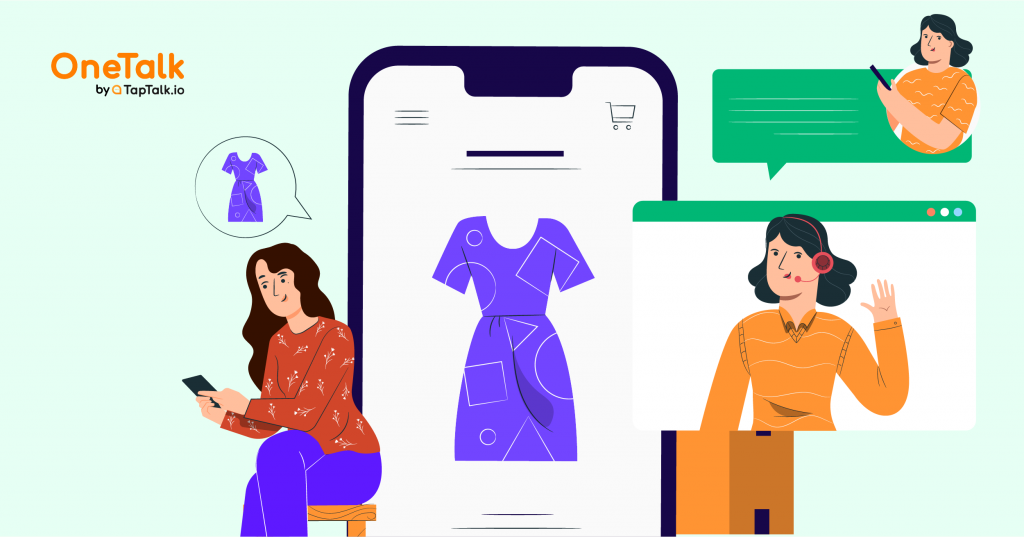
Siapa pun yang ada di dunia e-commerce akan memberitahu Anda bahwa e-commerce adalah tentang permainan angka. Angka-angka atau data yang diandalkan setiap hari menawarkan informasi tentang setiap aspek industri bisnis, dari keberhasilan iklan hingga perbandingan dari tombol 'Beli Sekarang' yang ditempatkan secara strategis.
Namun, dalam dunia big data dan analisis kuantitatif ini, kita telah kehilangan sesuatu. Masih ada yang kurang lengkap. Hal ini adalah elemen manusia atau human element. Ketergantungan pada data kuantitatif menawarkan limpahan data instruktif, tetapi membuat pelanggan dan calon pelanggan hanya menjadi data angka belaka. Singkatnya, data ini memberitahu kita tentang 'apa' tindakan orang-orang, tetapi mengabaikan 'mengapa' mereka bertindak demikian. Tentu, data-data dan hasil analisis akan menjelaskan 'siapa' dan 'apa' tindakan pelanggan. Tetapi, Anda tidak akan pernah tahu jawaban dari 'mengapa' tindakan tersebut dilakukan.
Menjawab alasan 'mengapa' tersebut adalah hal yang jauh lebih rumit karena mengandalkan percakapan dengan pelanggan. Jika diambil secara keseluruhan, perpaduan data kualitatif dan kuantitatif memungkinkan e-commerce menawarkan pengalaman yang dapat dipersonalisasi untuk pelanggan mereka. Dengan memahami keinginan dan kebutuhan pelanggan dengan menggunakan interaksi secara langsung, perusahaan e-commerce dapat memperoleh keunggulan besar dibanding kompetitor yang hanya menggunakan pendekatan berbasis angka untuk data dan informasi mereka.
Apa itu personalisasi e-commerce?
Apa yang sebenarnya dimaksud dengan 'personalisasi' di dunia e-commerce saat ini? E-commerce sering kali menyediakan cara untuk menyesuaikan pengalaman berbelanja untuk pelanggan tertentu. Ada banyak bentuk personalisasi ini. Bisa saja dengan dialog recommended product, iklan yang 'mengikuti' pelanggan di situs web yang mereka kunjungi, email pribadi dengan nama pelanggan, penawaran khusus berdasarkan riwayat belanja mereka, dan banyak lagi.
Namun, masalah dengan pendekatan yang dipersonalisasi ini adalah bahwa pendekatan tersebut dihasilkan oleh algoritma. Yang mana, merupakan sesuatu yang secara harfiah, impersonal.
Banyak perusahaan yang memberikan kesan personalisasi meskipun pada kenyataannya tidak melalui proses personalisasi dalam berhubungan dengan pelanggan mereka. Mereka mengandalkan bot otomatis atau auto-generated chat untuk memberikan kesan interaksi langsung terhadap pelanggan.
Pengalaman ini adalah realita dari banyak perusahaan e-commerce. Meskipun pengalaman ini lebih baik daripada tidak sama sekali, ini dapat menjadi penghalang untuk membuat pelanggan kembali. Dalam beberapa kasus, banyak pelanggan yang berpikiran privasi mereka terganggu dari personalisasi yang dibuat secara algoritmik, merasa bahwa data mereka sedang diambil (yang mungkin memang benar terjadi).
Mencapai personalisasi melalui percakapan pelanggan
Cara personalisasi ada di situs e-commerce saat ini mungkin memang berdasarkan data atau impersonal dalam banyak hal, tetapi bukan berarti hal itu tidak berharga atau efektif. Memiliki produk yang direkomendasikan dengan perhitungan kalkulatif atau buzzer email yang disesuaikan melayani pelanggan dengan produk dan penawaran yang dapat menghasilkan penjualan.
Personalisasi yang diperoleh dari analisis kualitatif akan menjadi lebih struktural. Informasi yang diperoleh dari percakapan terstruktur dengan pelanggan memungkinkan perusahaan-perusahaan e-commerce menyesuaikan pengalaman berbelanja untuk memenuhi kebutuhan berbelanja pelanggan. Dengan mendengarkan umpan balik pelanggan secara empatik, personalisasi situs web dapat disesuaikan dengan pemahaman tentang kebutuhan, keinginan, dan motivasi pelanggan berbelanja.
Misalnya, perusahaan e-commerce dapat memperbaiki kelemahan dan kekurangan dalam proses pembelian dengan mengamati kesulitan pelanggan saat melakukan pembayaran dan mereka mengubah layout website atau mengubah tata bahasa untuk menambah kejelasan dan mempermudah pemahaman pelanggan. Mereka juga dapat memperbaiki letak-letak tombol atau button tertentu situs web mereka setelah menganalisa pengalaman pelanggan tersebut.
Pengalaman pelanggan saat membuka situs web menjadi penting untuk meningkatkan personalisasi, sehingga hal inilah yang diutamakan dalam memperbaiki personalisasi di e-commerce.
Ada beberapa cara untuk memperbaiki personalisasi ini. Misalnya saja dengan menggunakan fitur smart video. Smart video tidak hanya dapat digunakan untuk berkomunikasi dengan pelanggan dalam focus group, tetapi karena pelanggan menjadi lebih nyaman dengan percakapan video ini sebagai bagian dari rutinitas sehari-hari mereka. Hal ini dapat dimanfaatkan sebagai cara untuk meningkatkan sales dan customer support, memungkinkan pelanggan maupun calon pelanggan untuk mendapatkan pengalaman tatap muka yang dipersonalisasi dengan anggota tim.
Tapi lebih dari hal tersebut, platform smart video menyediakan perusahaan e-commerce, cara untuk menjawab 'mengapa' melalui percakapan; untuk mengubah pelanggan dari yang tadinya hanya data angka pada website, menjadi manusia dengan kepribadian dan preferensi yang dapat diterjemahkan ke dalam perubahan yang menciptakan pengalaman e-commerce yang lebih personal.
Ada juga sebuah alat yang juga dapat mendukung personalisasi di e-commerce Anda. Alat ini adalah omnichannel. Salah satu brand terpercaya untuk omnichannel ini adalah OneTalk by TapTalk.io. OneTalk merupakan alat perpesanan yang dapat mendukung personalisasi perusahaan terhadap pelanggan.
Fitur OneTalk seperti All-in-one inbox, memungkinkan Anda atau agen Anda untuk menjawab pesan pelanggan dengan cepat dan efisien dalam satu dashboard dari banyak channel perpesanan. Dengan model customer service seperti ini, percakapan kepada pelanggan akan terjalin dengan lebih baik. Tidak perlu menggunakan bot, menggunakan elemen manusia dengan omnichannel akan membuat perusahaan anda lebih dekat dengan pelanggan, sehingga dapat mendukung personalisasi pelanggan dengan lebih baik lagi.
Selain itu fitur Disposition juga menghasilkan analitik yang dapat kita analisis. Percakapan yang dihasilkan pada omnichannel messaging platform akan mendukung percakapan pelanggan, yang pada akhirnya menghasilkan personalisasi pelanggan.
Dengan memanfaatkan percakapan dengan pelanggan melalui platform omnichannel, e-commerce dapat menciptakan pengalaman yang nyata dan mencapai personalisasi pelanggan berdasarkan wawasan pelanggan kualitatif.

During the pandemic, many companies decided to continue their business online. There are various reasons such as maintaining distance, filling their spare time, and so on. Because everything is completely digital, companies need to develop and improve quality for customers so that they always get the best experience.
Through experience, customers get more information than before, so the experience is one of the reasons customers will buy or use your product again.
Now, this is why it is important to understand Customer Experience Management (CEM). According to Gartner, the world's leading research and advisory firm, Customer Experience Management is the practice of designing and reacting to customer interactions to meet or exceed customer expectations and, in so doing, increase customer satisfaction, loyalty and advocacy. The following is an example of customer experience management software that you can use:
Qualtrics will help provide your business with a single source of real-time customer insights to help retain customers. With Qualtrics, you can create, monitor, and manage every experience on one platform and can be accessed anytime and anywhere. In addition, Qualtrics has been used by many entrepreneurs such as Coca-Cola, Emirates, HSBC, and Harvard University.
Clicktale offers tools to monitor and manage every customer experience on one platform and can be accessed anytime and anywhere. They also analyze your customer data to give you the best knowledge about your customer. Examples of business owners using Clicktale are Three (3), ANA Airline, Allianz, dan DELL.
With Freshsales, your team can now use AI-based lead scoring, phone, email, activity retrieval, and more. More or less the features provided are the same as the software mentioned above. Their main features are 360° customer view, seamless communication, in-depth sales analytics via reports, and schedule activity. Examples of entrepreneurs using Freshsales are Tokopedia, Honda, Bridgestone, and cisco.
Now, before you want to use Customer Experience Management Tools, here are a few things to keep in mind when considering customer experience:
Mobile experience and usability are interrelated terms in web or application design. Mobile experience refers to a person's subjective feelings and attitudes when using or interacting with certain products, such as websites or applications via mobile phones. Meanwhile, usability refers to the extent to which a product is effective, easy to use, easy to learn, efficient, error-free, and satisfies users.
If you are looking for customer experience management, make sure their app or website outlook is mobile friendly. According to research on the social media management platform, HootSuite and social marketing agency We Are Social entitled "Global Digital Reports 2020", as many as 338.2 million Indonesians are connected to the internet via their cellphones. This means that it is important for you to pay attention to customer comfort when accessing your app or website via mobile.
Mobile screens are obviously smaller than laptops, so your site layout should be easy to view and use on your phone. It includes a more vertical scrolling layout with clean, easy-to-read typography. In addition, make sure it looks simple and useful for customers, such as there are menu options (example: Home, Search, etcetera.).
Also, don’t upload large files on your app or website. Very large files can hinder the performance of a website and make the website lag.
The user onboarding process (user interaction) is a short interactive tutorial on how the core features of your app or website work. It's that simple, but can be ignored and prevents new customers from leaving your app or website due to confusion.
A good user onboarding process can help you improve app or website user interaction. There are many user onboarding methods such as home pages, email campaigns, push notifications, and others.
An example of the user onboarding process is when you access the app or website, usually, you will contact to register or make an account and do leverage. Then, you can freely access the app or website (example: buying goods). By registering, usually using e-mail, you will often get an email or push notification about a promo. Those two things will attract you to re-access the app or website.
Now then, after learning all this, did you know that there is a Customer Experience Management tools created in Indonesian? TapTalk.io is a company providing chat SDK (software development kit) and Omnichannel Messaging Platform for sales, marketing, and support that allows businesses to interact directly from websites and applications to provide the best experience to your customers, supported by an interface that can be personalized according to the brand image you want to present.
Here are some of TapTalk.io excellent features: All-in-One Inbox, Disposition, Assignment Rules, Case Details, Working Hour and Automatic Messaging, also WhatsApp, Telegram, Facebook Messenger, Twitter DM, LINE, Email, and others all combined in one channel.
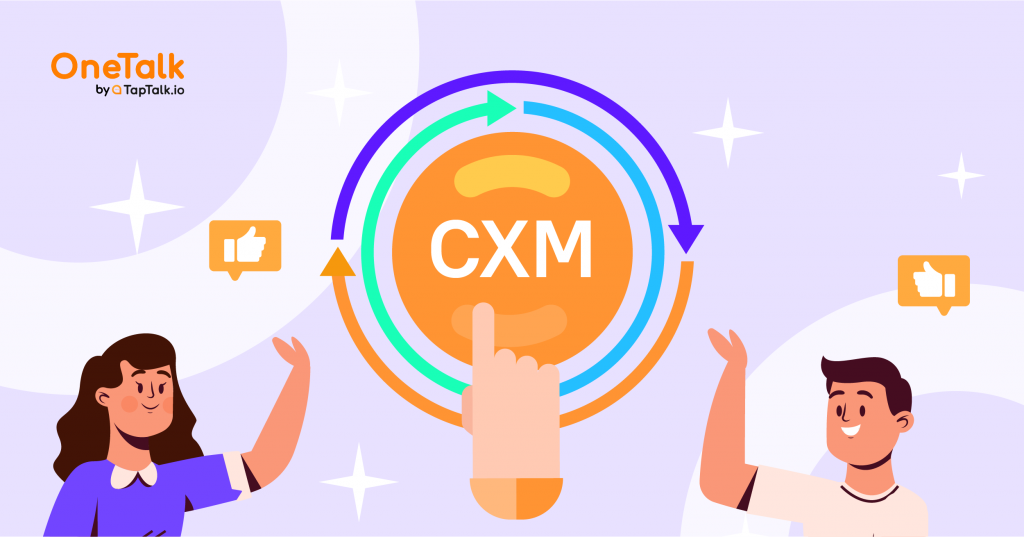
CRM and CEM / CXM are essential tools for maintaining business flow with customers. Both are there to optimize customer relationships. But, they are not the same. Similar, but different. To choose the right one, the organization must go beyond the alphabet soup of this tech business application.
What's the difference between CRM and CXM?
Customer relationship management (CRM) software tracks sales leads and customer interactions. CRM facilitates the development of relationships for organizations. CRM systems have many advantages, but not all businesses need them.
Customer Experience Management (CEM or CXM) is a broader information gathering process for tracking, monitoring, and managing all interactions between customers and organizations throughout the customer life cycle. Focus on unique perspective insights by digging deeper into the customer experience, listening to the customer, analyzing feedback, understanding the customer's perspective, and optimizing the customer experience.
In short, both tools optimize customer relationships. How they do this makes all the difference. CRM helps build relationships with your organization. CXM focuses on monitoring and improving the customer experience.
Customer experience management (or CXM) is the practice of the experience of every customer across all touchpoints and departments. A better CXM helps businesses have a better brand impression, retain more customers, and even convert them into brand advocates.
A CRM system, or Customer Relationship Management, is an application that focuses on your sales team. Starting with databases for maintaining prospect and contact information, and over the years, CRM capabilities have evolved to acquire business leads, develop them through automation, and enhance your customer relationships. Meanwhile, Customer Experience Management is an extension of the CRM system that can be extended for the entire organization. The CXM platform can map your entire customer journey to your business across sales, marketing, support, social media, and operations.
It can be used to integrate all departments by facilitating smooth and collaborative data flow across multiple communication channels. This provides a complete picture of the customer and seamlessly switches relevant customer information from one channel to another, enabling customer-facing employees to respond quickly to their needs.
Why does CRM no longer effective?
According to Thryv Vice President, Ryan Cantor, collecting customer preferences can be "amazingly fun" using data and technology. To pursue this superior customer experience, companies have spent millions of dollars adopting their own CRM platform. This ended pretty quickly.
Adopting CRM alone does not improve the customer experience. They tend to overdesign, complicate issues, get excited about technology, and forget their original purpose. Without a human touch in the middle, it was just cold, emotionless data.
Even worse, in this digital era, CRM does not have what it takes to store all the important data needed for modern business: activity on websites and mobile apps, emails, push notifications, support tickets, payment systems, and more.
What is lacking is customer interaction. Customers need to be the focus of solutions aimed at improving the experience. That's why it's time to turn into CXM: Customer Experience Management.
Very few traditional CRMs include a portal that connects to customers. It relies on bespoke messages, reminders, and notifications to maintain a certain level of customer engagement, but there is no centralized command center.
Important Note: Concentrating all the tools and services that impact customers into one system can significantly improve business efficiency. However, the difference between CRM and CXM is that it allows customers to experience the same experience in real time.
Can do more than simply talk to you and your company through a website, it can actually improve the customer experience.
Your data will be more accurate and timely if your customers can interact directly with you using the same technology that your business uses. Customer inquiries instantly reflect real-time behavior and status. This allows employees to provide more accurate and useful assistance.
Another bonus, this will also help your sales reps land more deals, and it will generate the positive reputation it needs to grow. If you're using multiple systems, or if you're only storing customer data but can't make it viable, throw away your current strategy and try CXM.
One of the tools that can improve the CXM is using an omnichannel messaging platform, such as OneTalk by TapTalk.io. With OneTalk, as a trusted omnichannel messaging platform, you can have a lot of features to make your customer’s experience delightful and amazingly fun. OneTalk's omnichannel feature allows your agent to handle multiple customer cases at one time. You can also keep an eye on your agents’ work and drive your sales and marketing up at the same time.
This kind of tool will improve your sales, marketing, and support. And, not to mention, all of the other tools that actually will improve your customer service experience.

Menjalani rutinitas customer service memang selalu berwarna. Tentu selalu ada berbagai macam kepribadian dan model pelanggan yang kita hadapi sehari-hari. Namun, bagaimana kita harus bersikap saat menghadapi pelanggan yang marah dan disaat yang sama harus tetap menjaga sikap kita?
Karena agen adalah citra perusahaan, bagaimana menyikapi pelanggan yang marah akan menjadi suatu hal yang penting. Oleh karena itu, seorang agen customer service harus mengerti kiat-kiat khusus untuk tetap tenang saat menghadapi pelanggan yang marah.
Berikut ini ada beberapa tips menghadapi pelanggan yang marah, yang bisa kalian gunakan untuk tetap tenang ketika keadaan memanas.
Ketika kita mendengarkan luapan amarah dari pelanggan, biasakan untuk memahami terlebih dahulu akar permasalahan yang dihadapi oleh pelanggan. Posisikan diri sebagai pelanggan dan pahami pola pikir dan perasaan pelanggan. Di sini, seorang agen customer service harus bisa menyimak dibanding hanya mendengar.
Simak cerita dan rasa frustasi pelanggan lebih dari kita berbicara. Ingat, kita memiliki dua telinga dan satu mulut, yang berarti kita harus bisa mendengarkan lebih dari kita berbicara. Untuk itu, coba praktikan mendengar secara aktif. Bagian penting dari mendengarkan secara aktif adalah memastikan Anda dan pelanggan berada di halaman yang sama. Jadi, setelah Anda menentukan akar penyebab kemarahan, ulangi kembali kepada pelanggan apa yang Anda dengar untuk memastikan Anda memahami satu sama lain, dan untuk memberitahu pelanggan bahwa kekhawatiran mereka telah didengarkan dan akan ditanggapi. Saat kita mencoba berbicara secara terus menerus ketika pelanggan sedang meluapkan kekesalannya, keadaan bisa berada di luar kontrol secara drastis. Pastikan Anda tetap menunjukkan support dengan berbicara tepat pada waktunya.
Praktikan “mendengarkan reflektif”. Maksudnya adalah, saat menjawab keluh kesah pelanggan anda menjawab dengan merefleksikan apa yang mereka katakan. Pendekatan ini mengharuskan Anda memahami apa yang dikatakan pelanggan dengan menafsirkan kata-kata dan bahasa tubuhnya. Kemudian, tanggapi dengan merefleksikan pikiran dan perasaan yang Anda dengar kembali kepada pelanggan Anda.
Misalnya:
Pelanggan: "Saya tidak habis pikir, mengapa kalian tidak bisa mengerti bahwa anggaran kami terbatas dan tetap tidak bersedia menawarkan diskon kepada kami?".
Customer Service agent: "Baik, jadi yang saya tangkap adalah bahwa harga yang kami tawarkan merupakan hambatan bagi bisnis Anda. Anggaran Anda terbatas, dan saya tidak menawarkan diskon yang dapat membantu kebutuhan Anda. Benar?"
Jika Anda sudah cukup memahami sentimen mereka, lanjutkan. Jika tidak, katakan, "Ceritakan lebih banyak, agar saya bisa lebih memahami." Jangan pernah berjanji Anda akan memperbaiki situasi - karena Anda mungkin tidak bisa. Tujuan Anda saat ini adalah membuat pelanggan Anda merasa didengar dan dihargai.
Ingat, bahwa meskipun Anda adalah citra dan luaran dari perusahaan Anda, tujuan komplain pelanggan adalah kepada perusahaan Anda dan bukan Anda. Pahami bahwa mereka marah kepada situasi yang mereka rasakan dan temukan saat ini. Karena, pada akhirnya, Anda dan pelanggan sama-sama mencari hasil yang positif. Anda perlu belajar bagaimana mengabaikan serangan pribadi, sarkasme, melebih-lebihkan & bahasa kotor. Ini sangat sulit karena naluri alami kita adalah untuk bertahan dan melakukan serangan balik.
Ketika pelanggan Anda terdengar marah dan negatif tentang suatu situasi, berterima kasih kepada mereka karena menyuarakan keprihatinan mereka kepada Anda dapat sangat membantu dalam membangun hubungan dengan mereka. Ucapan terima kasih sederhana untuk mengakui waktu dan kesabaran mereka saat Anda berupaya menyelesaikan masalah sudah cukup.
Contoh:
Cara termudah untuk berterima kasih kepada pelanggan Anda adalah dengan melakukannya terus-menerus. Saat pelanggan memulai pertanyaan tentang layanan, ucapkan terima kasih karena telah menghubungi tim Anda. Saat Anda mengerjakan kasus dan ada waktu diam yang lama, ucapkan terima kasih kepada pelanggan karena "mendukung Anda saat Anda memecahkan masalah mereka". Dan, ketika pelanggan memberi Anda umpan balik, baik positif atau negatif, ucapkan terima kasih kepada mereka karena telah membagikan perspektif mereka dan membuat tim dukungan Anda lebih baik.
Tentu saja, jika Anda dapat melakukan apa yang diinginkan pelanggan dari Anda, Hebat! Jika Anda tidak bisa, persiapkan solusi lain yang akan sesuai untuk pelanggan dan masalahnya.
Manfaat terbesar dari tidak mengambil sesuatu secara personal dan bereaksi seperti itu adalah kesadaran diri dan pemahaman. Jika Anda dapat belajar memilih tanggapan yang lebih baik, Anda akan menjadi tidak tergoyahkan, tidak peduli apa kata pelanggan yang marah itu. Dalam pekerjaan layanan garis depan, ini adalah sifat yang penting untuk dimiliki. Untuk dapat berada di sana untuk pelanggan Anda, dan dapat pulang di penghujung hari dengan sikap positif dan cinta untuk pekerjaan Anda, bahkan setelah hari yang buruk.
Hal terakhir yang harus kita lakukan adalah membalas komplain pelanggan dengan cepat. Misalnya saja menggunakan aplikasi perpesanan omnichannel. Salah satunya OneTalk yang menawarkan fitur yang mempermudah. Fitur omnichannel pada OneTalk memungkinkan agen Anda menangani berbagai case pelanggan dalam satu waktu. Dengan demikian, lamanya waktu tunggu tidak akan memperburuk situasi.

With the help of technology, there’s a lot of emerging startup company. What is a startup? A startup is a new enterprise that has been set up by one or more founders to create and sell a specific product or service for which they believe there is demand.
Nowadays, many startup companies have sprung up, how can your startup compete with them? You will need to think of a right and successful marketing strategy. The answer is Growth Hacking. What is Growth Hacking? Growth hacking was invented by businessman Sean Ellis in 2010. It applies to the rainbow of techniques used to move traffic as quickly as possible to a startup without investing too much in particular.
Growth Hacking is a mix of marketing, data, and technology. In order to increase the number of clients, a development hacker runs experiments based on a process-based methodology. Because of limited budgets and resources, Growth Hacking is ideal for startups, but it also lends itself to larger businesses.
Growth Hacking is basically a marketing strategy that uses creative thinking, analytics, and social metrics to gain momentum and visibility. It is now becoming part of the arsenal of tactics of online marketers, usually using low-budget and creative approaches instead of conventional marketing techniques.
If you’re looking for Growth Hack ideas, there are examples all over us. Companies are continually finding ways to innovate in the commercial room, and they also create the distribution funnel straight through their goods or services. Here are some things you may need to know if you want to Growth Hack your startup
One of the main aspects of Growth Hacking is to concentrate all of your energy on creating and expanding your audience. It's not enough to tell customers what you're doing, you want to involve them because they're going to be willing to buy from you. Will a certain influencer followed by your potential customers? Form a partnership or what you may know as an endorsement.
Optimize your social media marketing as well. Use a social media platform that is often used by potential customers. Dominate those social media from your competitors. You’ll have unlimited access to your followers if you can dominate a social media network over your rivals. In addition, you can redirect traffic to the social network from your website and vice versa, providing a nice place for your audience to make good use of.
Interact with your customer thru your social media. Be an active startup that shows your care for customers. Always show that you’re open to any questions, suggestions, or even critics. You can start discussions and glean fascinating information from your audience by opening the lines of communication.
Still talking about the audience, partnerships are the unsung heroes of the field of Growth Hacking. You can work together to reach 100,000 individuals if you have an audience of 50,000 customers and another entrepreneur in a related field has an audience of 50,000 customers.
You're not looking for a competitor that is direct, instead, your looking for a company that complements your own. For example, you are selling pretty eye contacts. You may be able to work with a company selling eye drop solutions.
A true Growth Hacker does not delete any alternative pathways that might lead him or her to a target. This means going offline to promote growth.
Consider participating if you have limited, niche-related activities in your area, or even outside the city. As a guest, you can go or reserve a booth for your company.
You will find a more appealing alternative than a faceless organization by meeting people face-to-face, shaking their hands, and telling them about their needs.
Offer freebies or free trials. It might not do much, but it's going to get people to the entrance. Once they see that your product can benefit them, they'll want more of it. Some customers would never be turned into paying consumers, but the onboarding process is what you want to concentrate on.
Retaining clients is better than obtaining them. That is why the model of freemium fits so well. Once they’re hooked on your product, convince them to use the paid version.
These are some tips you may need to do if you want to have a successful startup. Did you know that TapTalk.io always does one of those tips? TapTalk.io have social media and a blog to share and reach out to their customers. TapTalk.io has PowerTalk, which is an In-app chat framework with the best user experience. You can customize your own custom chat bubble to create a much more special connection with your customer.
There are some companies that use Growth Hacking to boost their business such as AirBnB, Facebook, Netflix, PayPal, and so many more. If you’re interested in creating your own startup, try applying the tips that were mention above.
Good luck!
Reach us by phone at (021) 27939266
© 2020 - 2023 TapTalk.io (PT Tap Talk Teknologi)
